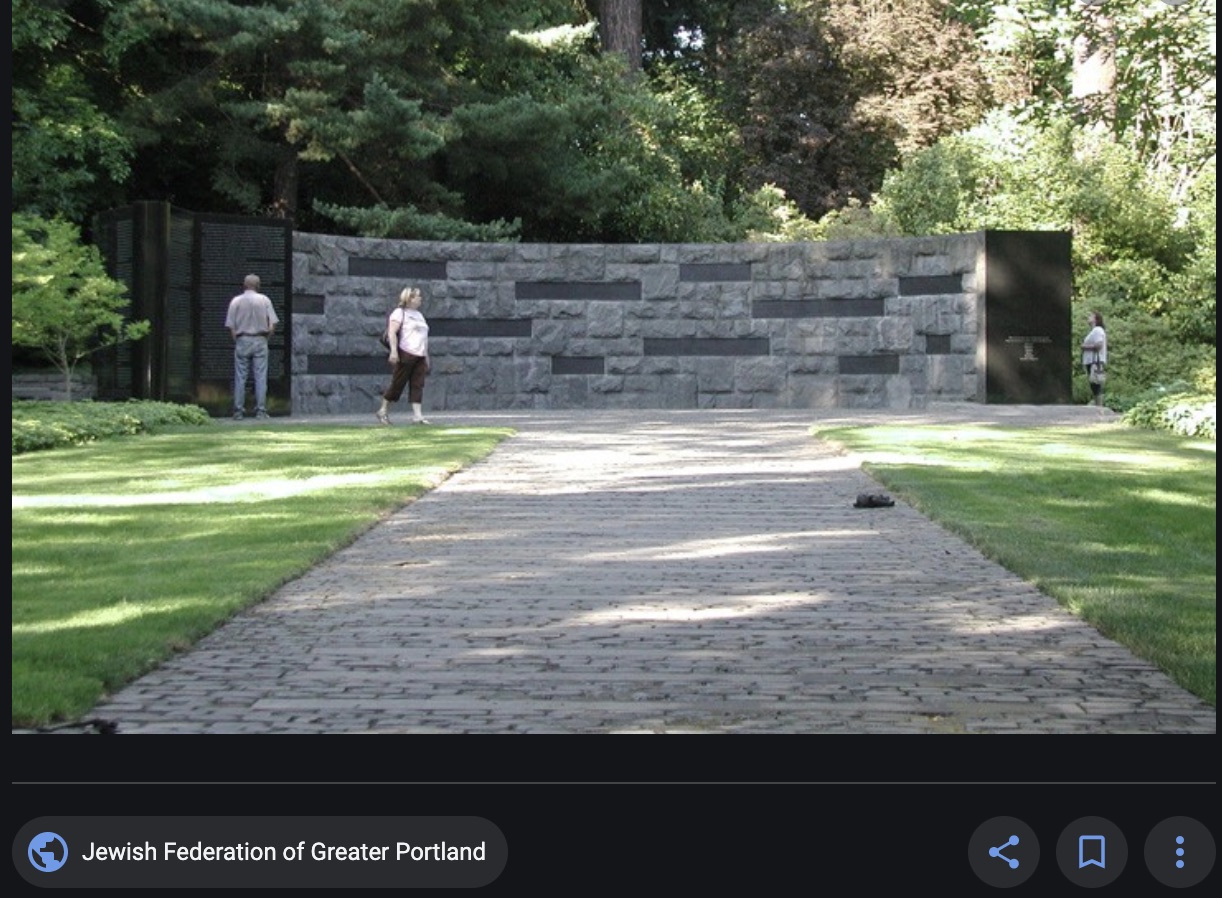HOLOCAUST
Portland has
some living survivors of the Holocaust.
Some of them belong to an organization called
Next Generation Group, which includes second,
third and fourth generation descendants of
Holocaust victims and survivors. https://nextgenerationsgroup.wordpress.com/
The Oregon Jewish Museum and Center for Holocaust
Education in Portland includes
information about the Holocaust. https://www.ojmche.org/
The museum opened in 2009. In 2014, the
museum merged with the Oregon Holocaust
Resource Center.
The Jewish Federation website describes the
mission of the museum and its Holocaust component:
Promote the responsible teaching of the Holocaust
through education programs and exhibits,
as well as the opportunity to stimulate dialogue
and action that teaches new generations the
need to uphold democratic values, prevent genocide
and foster human dignity. OJMCHE is
dedicated to communicating the lessons of the
Holocaust to teachers, students and the general
public in Oregon and SW Washington. This is
in fulfillment of the legacy left by victims to
survivors. https://www.jewishportland.org/community-directory/oregon-jewish-museum
After ten years of planning and negotiating, the
Oregon Holocaust Memorial was completed
in 2004 in Washington Park, Portland. It is
a quiet, wooded area of the park, and is
maintained by
the City of Portland. https://www.portland.gov/parks/oregon-holocaust-memorial
The Oregon Holocaust Memorial was dedicated on
August 29, 2004. The memorial features
a stone bench adorned with wrought-iron gating,
screened from the street by rhododendron
bushes. The bench sits behind a circular,
cobblestone area, which simulates a town
square. During
the Holocaust, many Jewish families were gathered
in town squares before being loaded onto
trains and taken to concentration camps. The
square contains scattered bronzes of shoes,
glasses, a suitcase, and other items to represent
everyday objects that were left behind. A
European-style, cobblestone walkway with inlaid
granite bars simulates railroad tracks, and leads
to a wall of history panels-- giant, stone
placards that offer a brief history of the
Holocaust and
quotes from Holocaust survivors. At the end
of the wall is the soil vault panel. Buried
below
the panel are interred soil and ash from six
killing-center camps of the Holocaust- Chelmo,
Treblinka, Sobibor, Belzec, Majdanek and
Auschwitz-Birkenau. The back of the wall is
engraved
with the names of people who died in the camps,
followed by the names of their surviving
relatives in Oregon and SW Washington.

Source:
Holocaust
Memorial website
|

